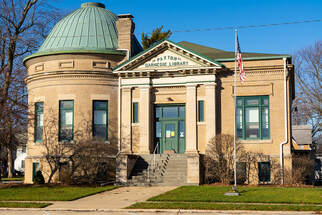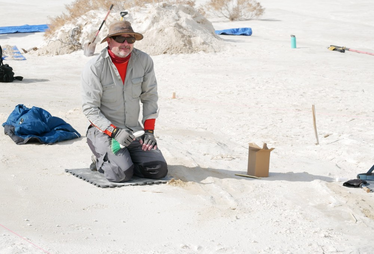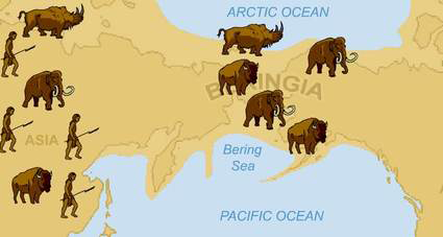|
At this point teachers and children are fully immersed in their academic labors, but it’s hard, isn’t it? The golden light of summer still surrounds us. Weekends permit last, longed-for visits to the beach. Sunsets come earlier and evenings are cooler, but our hearts still leap as those orange, purple, and amber rays tint the water’s edge. Every September I marvel at the wisdom of our “Labor Day” holiday as the first Monday of September. In Europe and most other parts of the world, the holiday is celebrated on May 1, a time when the world’s working population is getting ready to frolic. Spring is in the air; summer will soon arrive and vacation allow them respite. In the U.S. alone, we place that holiday with its cookouts and picnics just before we start to labor in earnest: September. Samuel Gompers, President of the American Federation of Labor who lobbied for the establishment of the federal holiday reminded us that “it differs essentially from some of the other holidays of the year in that it glorifies no armed conflicts or battles of man’s prowess over man,” but instead, celebrates hard work and human dignity, promotes “a nobler manhood, womanhood, and childhood, which may look forward to the day of deliverance from absurd economic conditions and cruel burdens.” In the century since the holiday’s inception, Americans have broadened the significance of Labor Day to include not simply organized labor but the dignity of all labor. September itself, as any teacher can tell you, is hard work. It is the daily demand of the alarm clock, the lesson plans prepared, the notebooks and schoolbooks ready to go, the lunch packed before you walk out the door. It is eight hours of leading a charge, confronting the expected and unexpected. It is busy and buzzing concentration in class, exuberant shouts, strides, and races on the playground. It is meeting fretful parents in the parking lot. It is exhausting… It is exhilarating. It is labor. Established in 1894 by Grover Cleveland’s administration, Labor Day came at a time when working conditions in steel factories, coal mines, and railyards were abysmal. Yet Gompers declared “our labor movement has no system to crush. It has nothing to overturn. It purposes to build up, to develop, to rejuvenate humanity.” (NY Times, Sep 4, 1910) He envisioned that progress through the work of unions, which advocated for an eight hour day, restrictions on child labor, wage security, safer working conditions and much more.  How does it build us up – develop and rejuvenate our humanity? In this post-pandemic September, I suspect that most teachers have their answer right in front of them. The children are thrilled to be back to in person learning, so excited to be together, with their new and old friends, with their teachers, with real people and real purpose all around them. There is still anxiety: are we past this Covid thing? But there is no question that our labors are contributing to student wellbeing, growth and recently rediscovered social humanity. We are back to rejuvenating humanity. And as for the children, it is worth letting them know that their labors are honored and important—that their efforts contribute to building a better world. Because they certainly do labor: September is remembering to do homework, having mom wake them up way too early, packing the homework as well as schoolbooks, recalling the lunch, getting to the bus stop on time, and then re-immersing themselves in all those class demands and rules – among them respect for their classmates and responsibility for the shared experience of school community life. Respect, responsibility, friendship – the great labors of September. We’re standing on a new shore. Hopefully, rested from our leisure and fortified by one last trip to the beach, we’re ready to dive right in. Mary Beth Klee NB: Our Core Virtues website features many books on the Labor Day tab that speak to the dignity of labor – and especially how children have helped to build our country. To read more from Telling Our Stories, visit our Blog Archives page. Before drinking lemonade on the deck, we are reposting our most popular July blog (2019). Philosopher Josef Pieper wrote Leisure: The Basis of Culture in 1948, and seventy years later his insights still reward us. In a culture that enshrines work over play, we are tempted, Pieper said, to reduce all life to purposeful activity energetically pursued. But human flourishing requires not just effort and socially useful action, but the ability to marvel, behold, and spiritually celebrate. Leisure is a step beyond the work-a-day world and feeds a quiet wellspring from which we live. Watching the sunset in a sea both violet and amber, listening to the distant caw of gulls and waves lapping the shore, drinking in a star-studded sky at the park as a symphony swells around us, fishing in a quiet pond, meeting the dew in your garden in an early morning walk, waking in a tent on a mountain summit. Or reading poetry beneath an old oak tree, dancing unobserved, reveling in the cool breeze through an open window as you gaze on a beloved cityscape. Leisure is about allowing oneself to be awash in life’s goodness, celebrating the inherent beauty and mystery of our lives and our world. Philosophers assure us that leisure – which seems to insinuate itself to us naturally in July -- is not the same as idleness. It is the quiet celebration of the world and life in which we find ourselves. If work involves effort, leisure involves openness to awe. This summer, whether your leisure involves quiet reading under a tree, days at the shore, concerts in the park, or fireworks in the night sky, we wish you the joy of an uplifted spirit open to festivity. And if you’d like to read more about leisure (under some shady maple tree), pick up a copy of Josef Pieper's Leisure, the Basis of Culture or check out this article: https://www.brainpickings.org/2015/08/10/leisure-the-basis-of-culture-josef-pieper/ Mary Beth Klee To read more from Telling Our Stories, visit our Blog Archives page.
To the extent that children themselves want to become helpers, encourage responsible ways to assist. Children in one school in Maryland are writing letters to children in a sister school in the western Ukraine, electronic letters of support, assuring them of their friendship and sympathy, telling them about their days, sending their thoughts and prayers. They are offering a branch of compassion and friendship and normalcy in a time of chaos. Point out to kids that acts of great evil, cruelty, and harm, often elicit the best from others: new depths of compassion and mercy. One thinks of the American experience of 9-11, and all those who raced to assist. (See our September 9-11 Heroes.) Right now, Poland has opened its borders to nearly 800,000 refugees, and not passively. Tens of thousands of volunteers from around that country and the world – people who did not know each other before March 1-- have come to that border to assist. And they can use our assistance. If a school wishes to raise funds to help the 400,000 endangered children, international relief efforts are mobilizing. Doctors Without Borders already has medical teams on the ground. The UN World Food Program has organized for Ukrainian Emergency relief. Caritas Ukraine, which is supported by Catholic Relief Services, and Save the Children are also on site already with medical supplies, food, water, and refugee support. The appropriately named “Mercy Chefs” are sending food relief to Romanian and Polish border camps. All these efforts will be make-shift and provisional, as we hope and pray for a miracle that saves the weaker nation from the stronger. The international community is ultimately on the hook. “Faithfulness is standing by those we love, those we serve, and what we believe.” Will we? Mary Beth Klee Since this blog was posted two weeks ago, more than three million refugees have fled Ukraine during an unabated Russian attack. To read more from Telling Our Stories, visit our Blog Archives page.  “I think America has come further in giving opportunity to the best that’s in human nature than any other country ever in history, and we seem to be holding on for over 200 years already. We’ve greatly improved the inequalities and the shortcomings of our way of life as we’ve moved forward.” He didn’t end there. “One of the things I feel is that we are a country of good people. We are a country of well-meaning, hard-working, conscientious people — 90% of us. And we are blessed with progress in a number of fields today, the likes of which no people on Earth have ever enjoyed in all of history.” He pointed to progress in medicine, in the opportunity for education, and in the quest for equality itself. America is a can-do nation, and as long as we educate our children in the nation’s stories, “I am optimistic,” said he. The key is to educate our children in the nation’s stories. Martin Luther King Jr. knew them and loved them, and it made him a powerful agent for change. “History is an antidote to the hubris of the present. History should be a lesson that produces immense gratitude for all those who went before us." When McCullough points out that “there are still more public libraries in this country than Starbucks,” he affirms his fundamental optimism about the American experiment. We still have lots to be optimistic about. In the past three weeks my husband and I have been traveling by car up and down the east coast – “all come to look for America.” If you travel from Anne Hutchinson’s Portsmouth, Rhode Island to the Founders’ Philadelphia to the Wright Brothers’ Kitty Hawk, then on to guess who’s Jacksonville, and come back through George Vanderbilt’s Biltmore and George Washington’s Mount Vernon, you’ll be mightily impressed too. Of course, you’ll be impressed by the stories of all those titans of the American past, but not incidentally by the people you meet working in each location in each city each day. Americans of all races, genders, and ethnicities are ploughing ahead (like Washington at Mount Vernon) with pretty good humor. They’re keeping their heads down as we close out this pandemic, and they’re fed up with restrictions. But everywhere you go, one meets hard-working, conscientious, decent, and fundamentally positive people, who truly live out the ideals of liberty and justice for all. The African American manager at the Hampton Inn in Alexandria, Virginia—when I told him I was from Rhode Island—pointed out to my delight that we were practically family because his aunt was from Rhode Island too, and wasn’t it great that Viola Davis got her start there? I practically hugged him. (But then again, there was an acrylic placard between us.) Still, our nation’s Home Away from Home (the Hampton Inn in Asheville NC), neatly sums up the national creed on the placard in its halls: “Today is going to be amazing!” Ya gotta love it. Go ahead and teach the kids: love your country. Do something for your country. Mary Beth Klee To read more from Telling Our Stories, visit our Blog Archives page.
 Michael Bennett; Photo credit: Bournemouth University Michael Bennett; Photo credit: Bournemouth University This moment and these findings have something to teach us about intellectual virtue and the nature of science. Some very tenacious researchers at White Sands had literally been digging in these dunes for decades when the new prints were exposed. The geologists who uncovered them had been over this region a dozen times before, seeking, wondering. But one day in 2019 high winds literally turned back the sands of time, and tireless British geologist Michael Bennett along with White Sands Park Director David Bustos beheld a different landscape. Exposed in the bluff were undeniably human footprints fading into a mound of sand. The two held their breath and forged forward. Gentle scraping exposed outlines of a buried track. “At that point,” Bennett recalled, “we said Bingo, we’ve got it.” White Sands had been on geologists’ radar since the 1930s, when a twenty-two-inch footprint thought to be the mythical “Bigfoot,” was discovered there. The remarkable print turned out to be a giant ground sloth, and in subsequent years ancient human and extinct animal prints were discovered nearby, dating to perhaps ten thousand years ago. Maybe more… But radiocarbon dating is a tricky business and requires seed samples from above and below the imprints, from which the age can be calculated. Many tracks are better than one. That’s why the 2019 discovery is breathtaking.
 The dating of seeds above and below the prints suggests humans and animals tramped here between 21,000 and 23,000 years ago. “We’ve really tried to prove it’s not that old, and we keep coming up dry,” Daniel Odess, archaeologist and one of the authors of the study reports. Layer after layer of track yields the same data. Wow. Of course, caution should prevail. Is there anything “off” about these radiocarbon dating results? Can a second method of dating be found? Or do these new findings constitute a body of evidence so overwhelming that it’s time to alter former theories? We don’t know yet, and I am a student of history not science, but I’m betting on a paradigm shift. And that will challenge teachers. For almost three decades first graders in Core Knowledge Schools across the country --and high schoolers everywhere--have been learning that human settlement in the Americas dates to the end of the last Ice Age. I personally wrote and recorded song a called “Back in the Ice Age” that hundreds of former Crossroads Academy students can sing. It has the lyrics “Back in the Ice Age, twenty thousand years ago…woolly mammoths crossed the land bridge with hunters close behind, from Asia to America, a new world they did find, back in the Ice Age.” Now what? Maybe I just change the lyrics to “Before the ice froze, thirty thousand years ago….” In October the Core Virtues program spotlights the virtues of diligence and perseverance. Those are indispensable intellectual excellences: care in our work, pressing on despite difficulty. My hat is off to the tenacious team of international researchers at White Sands, who worked assiduously and never gave up on an elusive quest. Well done, noble scholars! And I tip my hat too to the 22,000-year-old teens and kids, who left their mark, perhaps drawing water for their folks at the now extinct “Lake Otero,” where the prints remain. And let’s not forget to spotlight two other intellectual virtues these scientists displayed, ones that are also cultivated at Core Virtues Schools: openness to inquiry and humility in the face of facts. Those traits are key to the progress of knowledge in general and science in particular. Scientists construct theories (or “paradigms”) of what happened in accord with the most reliable data they have. For years, it has seemed from dating of glacial moraines, ice cores, human remains and artifacts that a post-Ice Age crossing was the most likely explanation of human settlement in the Americas. But that is a theory, not a fact. And science is a process. New evidence hinted the theory might be incorrect, and an intrepid few researchers were open to questioning how “settled” the science was. They didn’t shy away from research that might yield pre-thirteen-thousand-year-old results. Colorado geologist Thomas Stafford notes that it has not been common scientific practice to think past that date. As a radiocarbon dating expert, he would often receive samples to date and be told not to bother looking past the thirteen-thousand-year material. “If you’re not looking for anything, you’re not going to find it,” Stafford says. Openness to inquiry must guide intellectual endeavor. When advocates for various theories and policies proclaim, “the science is settled,” all our alarm bells should go off. On highly complex issues, the science is hardly ever “settled.” Ask Copernicus. Ask Galileo. Ask Einstein. Ask Michael Bennett. Nature surprises us, and our understanding evolves. We have to be humble enough to allow that evolution -- admit that we might not know it all. Meanwhile, what do we teach those first graders and high school students about how human beings came to inhabit the Americas? Maybe we say: Well, it was a very long time ago, and because we don’t have written records and our scientists are literally still digging, we don’t know for sure. But here’s what we think. Early human hunters probably crossed from Asia to America at a time when that area wasn’t covered with ice. That could have been before the last Ice Age. We used to think we humans came at the end of the Ice Age, but now we’re not sure because of evidence found in our own national park at White Sands, New Mexico. Maybe you can help solve that puzzle if you become an archaeologist or geologist. And teachers shouldn’t miss the opportunity to tell students they should learn some lessons from those Ice Age youth. When your parents tell you to take your little brother or sister and go do something, just do it. Leave a legacy….. Mary Beth Klee, Ph.D. has taught the Ice Age unit to first graders numerous times and now needs to regroup.
The Bennett, et. al. study is at https://www.science.org/doi/10.1126/science.abg7586 and the National Geographic article at https://www.nationalgeographic.com/history/article/fossil-footprints-challenge-theory-when-people-first-arrived-americas. And for another thought-provoking challenge to a realm in which “the science is settled,” read New York University physicist and Obama Under Secretary of Energy Steven Koonin’s latest work Unsettled. What Climate Science Tells Us, What it Doesn’t and Why it Matters. (April 2021) To read more from Telling Our Stories, visit our Blog Archives page. |
AuthorWrite something about yourself. No need to be fancy, just an overview. Archives
April 2024
Categories |
